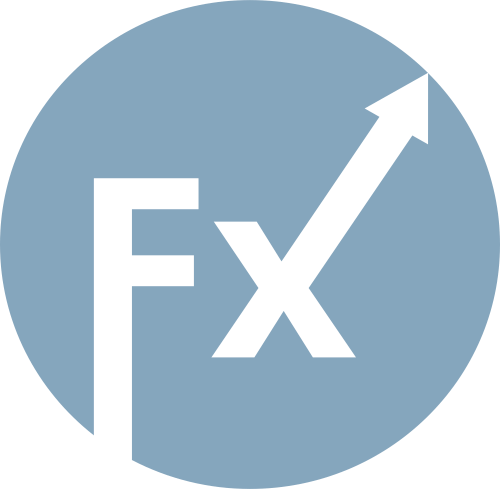Futures S&P 500 dan indeks Eropa melonjak, sementara Nikkei turun. Hasil mengejutkan dari laporan ketenagakerjaan AS mendorong pasar untuk memperkirakan pemotongan suku bunga tambahan. Para investor menantikan laporan pendapatan dari Disney, McDonald's, dan Caterpillar. Dolar tetap tidak berubah setelah pembalikan tajam pada hari Jumat. Harga minyak turun di tengah peningkatan produksi dari OPEC+.
Perusahaan-perusahaan AS terus mengesankan dengan hasil keuangan yang kuat, memulihkan optimisme di pasar. Yang patut diperhatikan adalah para pemain yang aktif menerapkan teknologi kecerdasan buatan. Keberhasilan mereka telah menjadi faktor kunci yang mendukung momentum pasar saham.
Meski para ahli meramalkan volatilitas jangka pendek, prospek jangka panjang tetap positif. Fundamental bisnis, terutama di sektor AI, menunjukkan pertumbuhan yang stabil ke depan.
Hingga data dirilis, hampir 300 perusahaan di S&P 500 telah melaporkan pendapatan Q2, menunjukkan peningkatan 9,8% dari tahun ke tahun, jauh melampaui ekspektasi sebelumnya sebesar 5,8%. Saham di banyak perusahaan mendekati rekor tertinggi sepanjang masa, memperkuat kepercayaan para investor meskipun permintaan lesu dan risiko perdagangan yang berkelanjutan.
Minggu ini, semua mata tertuju pada hasil kuartalan dari Disney, McDonald's, dan Caterpillar. Laporan-laporan ini akan memberikan wawasan berharga tentang kesehatan ekonomi AS dan mungkin memberikan dorongan terakhir bagi Dow Jones untuk melampaui puncaknya pada bulan Desember.
Para analis menyoroti bahwa perusahaan yang berinvestasi dalam kecerdasan buatan memberikan hasil yang paling mengesankan. Ini memperkuat keyakinan bahwa AI dapat menjadi mesin pertumbuhan kuat yang membentuk ekonomi masa depan dan membuka aliran pendapatan baru.
Setelah beberapa kuartal pertumbuhan yang stabil, pasar ekuitas global menghadapi gejolak yang tak terduga. Pemicu utamanya adalah kemunculan cepat startup Tiongkok yang berfokus pada AI, DeepSeek. Kehadirannya di panggung global menimbulkan kekhawatiran investor bahwa persaingan yang semakin intensif dapat mengikis dominasi raksasa teknologi seperti Nvidia.
Meskipun S&P 500 naik 2,2 persen pada bulan Juli, para ahli memperingatkan bahwa pasar memasuki dua bulan yang secara tradisional volatil, Agustus dan September. Menurut analis Hogan, secara historis, periode ini melihat lonjakan volatilitas pasar, sering kali mencapai puncaknya pada bulan Oktober.
Sesi trading hari Jumat dimulai dengan penjualan yang meluas. Pemicunya adalah pembatasan perdagangan baru AS dan pendapatan yang mengecewakan dari Amazon. Pasar tenaga kerja yang melemah semakin memicu kekhawatiran, mengurangi minat investor terhadap aset berisiko.
Menjelang Senin, kondisi mulai stabil, didukung oleh sinyal yang menggembirakan dari Asia. Para investor merasa tenang dengan kemungkinan pemotongan suku bunga, yang membantu meredakan ketakutan akan perlambatan ekonomi AS. Namun, kepercayaan keseluruhan terhadap kebijakan ekonomi Washington tetap tidak pasti.
Pendekatan "buy-the-dip" kembali populer. Ini berkontribusi pada pemulihan berjangka ekuitas AS dan Eropa dan memungkinkan dolar untuk mendapatkan kembali beberapa pijakan setelah kerugian hari Jumat, yang dipicu oleh data ketenagakerjaan yang lemah.
US Treasuries mengalami beberapa pengambilan keuntungan setelah lonjakan terbaru mereka. Namun demikian, pasar berjangka terus memperkirakan kemungkinan sekitar 85% dari pemotongan suku bunga Federal Reserve pada bulan September. Selain itu, para trader memperhitungkan potensi pelonggaran moneter sebesar 100 basis poin atau lebih selama tahun depan.
Angka ketenagakerjaan terbaru memberikan dampak besar bagi investor. Data yang direvisi menunjukkan rata-rata kenaikan pekerjaan bulanan selama tiga bulan terakhir turun menjadi hanya 35.000, penurunan tajam dari lebih dari 230.000 awal tahun ini. Satu-satunya titik terang adalah meningkatnya kemungkinan pelonggaran kebijakan moneter.
Pemecatan kepala Biro Statistik Tenaga Kerja oleh Presiden Donald Trump telah memicu gelombang kritik. Di tengah indikator makroekonomi yang tidak stabil, langkah ini menimbulkan keraguan tentang keandalan data resmi mengenai ekonomi AS.
Kekhawatiran tambahan disebabkan oleh laporan niat Trump untuk menunjuk anggota baru ke Dewan Gubernur Federal Reserve lebih awal dari jadwal. Para pelaku pasar khawatir bahwa kandidat tersebut dapat bergantung secara politik, yang dapat mengkompromikan independensi lembaga keuangan utama. Meskipun Trump mengakui bahwa Jerome Powell kemungkinan akan tetap menjadi Ketua Fed hingga akhir masa jabatannya, hal ini tidak sepenuhnya meredakan kekhawatiran.
Pasar keuangan telah mulai memperhitungkan perubahan di masa depan. Imbal hasil obligasi Treasury dua tahun turun hampir 25 basis poin pada hari Jumat, penurunan satu hari terbesar sejak Agustus tahun lalu. Ini memperkuat ekspektasi pemotongan suku bunga.
Di tengah penurunan imbal hasil, para investor mulai kembali ke ekuitas. Saham berjangka pada S&P 500 dan Nasdaq masing-masing naik 0,4 persen. Indeks Eropa juga bergerak lebih tinggi: EUROSTOXX 50 naik 0,6 persen, FTSE bertambah 0,5 persen, dan DAX naik 0,4 persen.
Indeks MSCI Asia-Pasifik di luar Jepang naik 0,7 persen, didorong oleh kenaikan 1,1 persen pada saham Korea Selatan. Sementara itu, Nikkei Jepang turun 1,4 persen karena apresiasi yen. Saham perusahaan terbesar Tiongkok tetap tidak berubah.
Pasar saham AS mendapat dorongan dari hasil musim pendapatan yang optimis. Dari sekitar 500 perusahaan S&P, dua pertiga telah melaporkan, dengan 63 persen melebihi ekspektasi analis. Pertumbuhan pendapatan keseluruhan mencapai 9,8 persen, menandai peningkatan signifikan dari perkiraan 5,8 persen pada awal Juli.
Minggu ini melihat laporan keuangan dari raksasa seperti Disney, McDonald's, dan Caterpillar, serta beberapa perusahaan farmasi terkemuka. Laporan-laporan ini memungkinkan para investor untuk menilai lebih baik keadaan bisnis di berbagai sektor utama ekonomi.
Data pasar tenaga kerja AS yang mengecewakan menekan dolar, merusak posisi dominannya baru-baru ini. Mata uang tersebut sedikit pulih ke 147,79 yen setelah jatuh 2,3 persen pada hari Jumat. Euro tetap stabil di 1,1574 dolar setelah lonjakan 1,5 persen akhir pekan lalu.
Indeks dolar AS mundur ke 98,801 dari puncak minggu lalu di 100,250. Pound Inggris bertahan di 1,3281 dolar karena investor hampir yakin, dengan probabilitas 87 persen bahwa Bank of England akan memotong suku bunga utamanya pada hari Kamis. Regulator tetap terbagi dalam pandangannya, tetapi pasar masih mengharapkan setidaknya dua putaran pelonggaran sebelum pertengahan tahun depan.
Dalam komoditas, emas bertahan stabil di 3.357 dolar per ons, setelah koreksi moderat dari reli lebih dari 2 persen pada hari Jumat. Minyak terus menurun: Brent turun 0,2 persen menjadi 69,52 dolar per barel, dan WTI AS turun 0,1 persen menjadi 67,24 dolar. Alasannya adalah keputusan OPEC+ untuk meningkatkan produksi pada bulan September, secara efektif membatalkan pemotongan produksi yang disepakati setahun yang lalu.

TAUTAN CEPAT